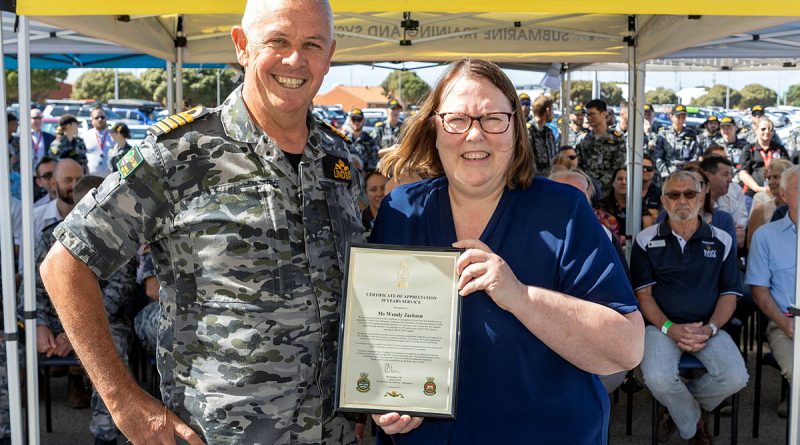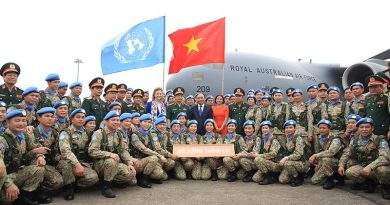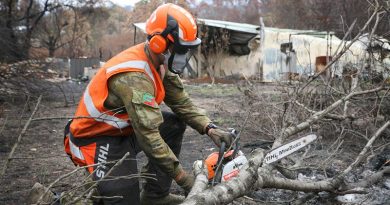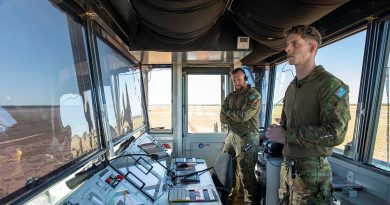Thirty years of evolving submarine service

When Wendy Jackson first saw the Submarine Training and Systems Centre (STSC) near Perth in the early 90s, it was a shell of a building.
CAPTION: Director Training Authority – Submarines Captain Richard Lindsey, left, presents a certificate of appreciation to Wendy Jackson for 30 years of service at the Submarine Training and Systems Centre at HMAS Stirling. Story by Corporal Jacob Joseph. Photo by Chief Petty Officer Yuri Ramsey.
Naval shipbuilding company ASC had just been selected to build and maintain Australia’s new Collins-class submarines and HMAS Stirling was to be the fleet’s new home.
With the new boats still under construction in Adelaide, the then secretary to the building manager worked with uniformed personnel to build a space that would prepare future submariners.
This month, staff and students marked 30 years training at Stirling.
Ms Jackson and two other ASC members, Daryl McIntyre and Des Byrne, were acknowledged for their decades-long contribution.
“When someone asks me how you could stay in the same job for 30 years, I tell them it’s not the same job because we’re constantly evolving,” Ms Jackson said.
“We started with computer labs and now we’ve got virtual reality.”
As well as simulators that do everything except re-create the sound of diving, STSC is home to virtual reality systems that help students learn the ins and outs of a boat.
Current student, weapons electrical engineer officer – submarines Lieutenant Aravind Jaghamani, said Boat 7, a virtual-walk through of a Collins-class, was one of the most valuable training aids available to students.
“You can actually put your hands on a valve and operate it to see how a particular system works,” Lieutenant Jaghamani said.
“It’s absolutely wonderful because the simulated training platform is as close to the real thing as possible.”
While training methods have become more sophisticated since, the mission remained unchanged, according to submarine training director Captain Richard Lindsey.
“We are training to fight and win,” he said.
“We’ve achieved a 30-year milestone of delivering Collins-class training and, based on the requirement to have no capability gap, training delivery needs to continue for a number of decades.”
Just last year, the Maritime Warfare Officer Submarines curriculum changed to include a sovereign Australian Submarine Command Course to better support this aim.
Previously, personnel were sent to the Netherlands.
Now all aspects of training for enlisted and commissioned submariners are held at STSC.
“We deliver cradle-to-grave training,” Captain Lindsey said.
“At the moment I’ve got 150 in training. That’s an increase on previous years.
“We are growing the submarine service, so the directed training requirement is higher than it’s ever been.”
.
.

.
.





